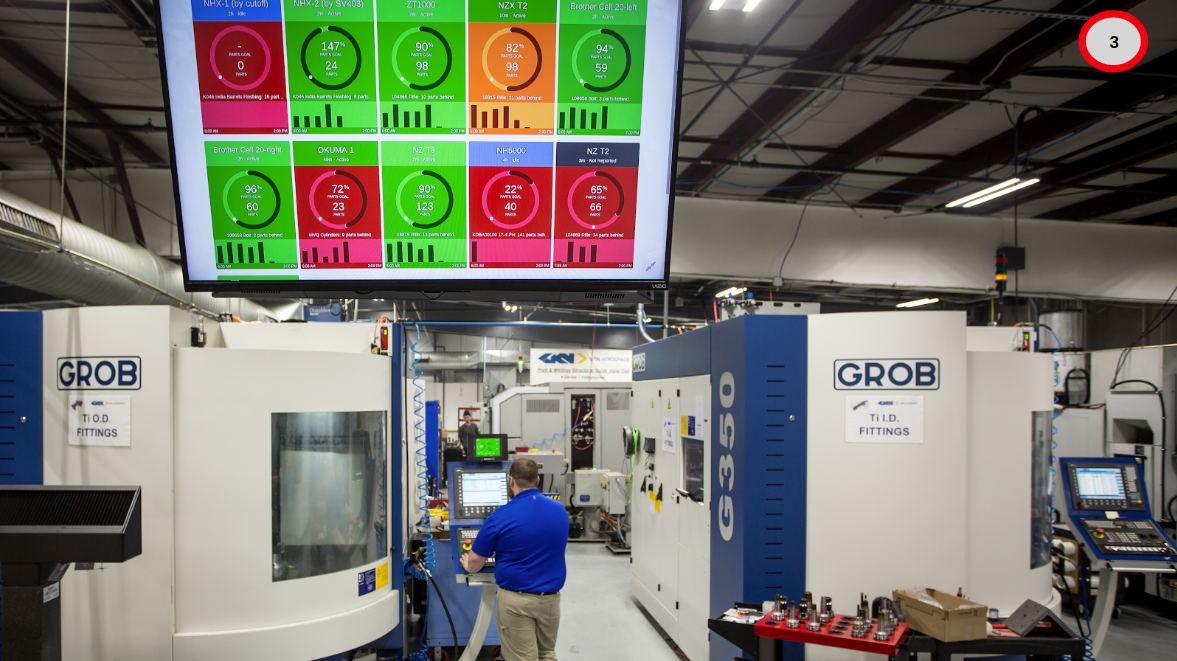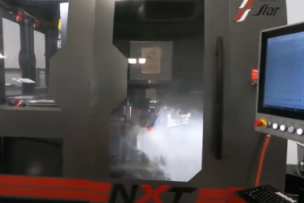Similar recommendations exist for CNC lathes and indeed any machine tool, all of which will enjoy longer life through the implementation of a robust preventive maintenance program, one that includes basic housekeeping items like regular machine cleaning and lubrication, monitoring of cutting fluids, and routine inspection of axial motion via a ball-bar device or equivalent, addressing potential problems before they can start. That said, modern technology offers machine tool owners and operators some valuable weapons in the war against unplanned machine downtime, starting with monitoring.
Read more: 5 Ways Manufacturers Can Use Data Analytics to Improve Efficiency
Harnessing the Power
Graham Immerman, vice president of marketing at MachineMetrics, will tell you that practically all CNC equipment today comes equipped with sensors that generate valuable information on machine status, operating temperatures, spindle and servo power draw, alarm codes, and so on, all of which are viewable from a smartphone, tablet, PC or desktop computer. It’s his team’s job to give shops the software tools needed to gather this information and then harness it for a) greater productivity, and b) the elimination of this article’s focus: unplanned downtime.
“There are literally hundreds of ways to reduce machine downtime, and the first step in doing so is having the data needed for better decision-making,” Immerman says. “With this in mind, one of the first questions any shop should ask is, ‘What kind of downtime are you trying to avoid?’ We have customers come to us all the time for help with predicting machine failure, and while this is certainly something we can assist them with, it might not provide the greatest return on investment.”
In one example, Immerman notes that the production of poor-quality parts ultimately leads to rework, requiring impromptu schedule changes. This might not fall cleanly into the “unplanned downtime” bucket but is every bit as disruptive and costly. So is over or underestimating cycle times when quoting a job. The first of these will lead to excess capacity, or gaps in the production schedule that might not get filled, while the latter causes the same problem as the rework scenario just described (that is, too much work and not enough hours in which to complete it); though the cause of downtime in each instance is different than having a busted machine tool, the results are no less harmful.
“Too often the data needed to quote a job comes from the ERP system, a spreadsheet, or even an educated guess, none of which might be accurate,” Immerman says. “That’s why shops must gather as much information as possible from their production floor assets. Not only does this help identify potential problems that directly lead to machine downtime, but just as importantly, it helps to reveal hidden capacity. Oftentimes, the best way to reduce downtime is by optimizing processes and developing accurate job standards. I know of one customer who reduced their annual downtime by $4.5 million just by understanding how long it actually takes to set up a machine.”






Talk to Us!
very good Artical sometime it is sad that the higher up dont listen to the small fry down on the floor is where it all starts is it because they are making so much money that a few million is not worth starting to fix thing that fur see coming sometime i just dont understand. Tks
35Leave a reply
Your email address will not be published. Required fields are marked *